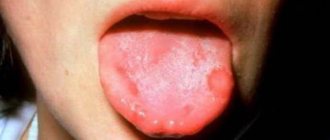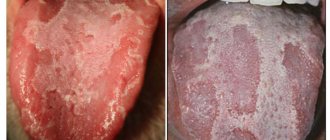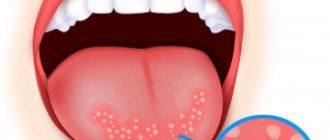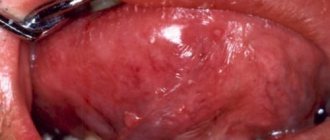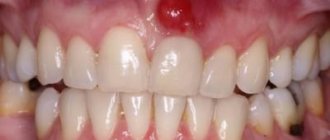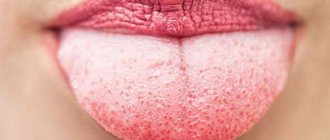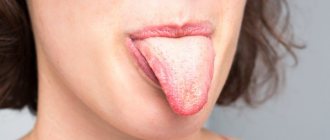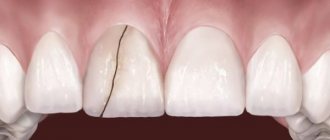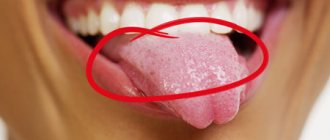Why can it appear in a person?
Few people know that teeth have a slightly porous structure and they contain a huge amount of carbonates.
Acid destroys them, and tooth porosity increases significantly. It begins to penetrate deeper and deeper and, reaching the nerve endings, irritates them. The fact is that those areas where acid penetrates are poorly accessible or completely inaccessible. It is extremely difficult to get rid of it. As a result, not only pain and tooth decay occur.
In addition, this phenomenon occurs due to various dental problems. It is important to carefully monitor oral hygiene. It is necessary to brush your teeth properly and strictly follow the dentist's recommendations. A toothbrush should not be too hard or too soft. This phenomenon also occurs when eating food that is too hot or cold.
The most unpleasant sensations occur after consuming:
- Cold alcoholic drinks;
- Cold fruit juices;
- Citrus;
- Sour berries;
- Sour.
After eating such products, it is recommended to brush your teeth an hour later.
What is it: delving into the definition
According to the definition from Wikipedia, a sore throat is the sensation of an astringent, tart acid in the mouth.
The word oskoma is often used in conversation, while the Belarusian pronunciation is askoma. The astringent sensation is similar to the numbness after anesthesia. This is usually a short-term reaction to an excessive stimulus. A large amount of acid, penetrating deeply into the porous structure of hard dental tissues, reaches the nerve endings. As a result, a sore throat appears. It often causes mild discomfort in the mouth, which quickly disappears. With increased sensitivity of tooth enamel or mucous membrane (hyperesthesia), aching pain occurs that lasts a long time and intensifies when biting or pressing.
Teeth set on edge occurs when consuming:
- cold or hot drinks, solid food:
- products, fruits and berries containing high amounts of acid;
- highly carbonated drinks, especially if they contain phosphoric acid.
In some cases, pain occurs when inhaling cold air. Sweet and spicy foods can also set your teeth on edge.
What is sore throat
The word "on edge" means "an astringent sensation in the mouth." The phrase “to set one’s teeth on edge” is often used in everyday life. When they use it, they mean something unpleasant and boring, something that irritates everyone. In general, the concept comes from the outdated word “skomit”, which means “whining”, “to hurt”, “to pinch”.
The condition may occur when eating acidic foods
A sore throat on the tongue or on the teeth is an unpleasant sensation, pain and discomfort that occurs when interacting with irritants, which most often include sour foods and drinks. It’s not for nothing that there is such an old saying: “If you love currants, you can set your teeth on edge.”
This phenomenon quickly passes after eating. It can appear in completely healthy people, but most often indicates the presence of problems in the oral cavity.
Knowing the reasons helps to cope with the problem
One person can eat ten sour apples and wash down cold ice cream with hot coffee without feeling unpleasant symptoms in the oral cavity, while another gets a sore throat from the slightest piece of sour, a sip of hot or cold. This is due to the presence of diseases or conditions that make the mouth more sensitive.
A feeling of teeth on edge indicates the beginning of tooth decay: damage to the enamel, exposure of the dental neck.
The most common causes of a sore mouth are as follows:
- Caries damage and its non-professional treatment.
- Inflammation of the gums - periodontal disease.
- Mechanical damage, chips and cracks.
- Malocclusion.
- A large amount of tartar.
H-bomb
The taste of hydrogen sulfide, which is popularly called “rotten,” is perhaps the most unpleasant of all existing sores. Its cause is the same notorious gastritis, albeit with low acidity. As a rule, this is a congenital pathology: for some reason, a person produces insufficient gastric juice.
To overcome the sore throat, you will have to take special medications that should be prescribed by a doctor. For example, these are hydrochloric acid and gastric juice (synthetic drugs that can replace natural fluids and help digest food), as well as plantain juice (stimulates the production of its own acid).
As for the diet that is mandatory for all gastritis sufferers, in this case you will only be glad to follow it.
Indeed, with low acidity, it is recommended to consume spicy and fried foods, which promote the release of large amounts of gastric juice.
The main thing is not to eat too much, otherwise everything will return to normal: the food will begin to rot, and the taste of hydrogen sulfide will again take over your mouth. For gastritis with low acidity, you should eat often, but little by little. Also, have dinner no later than 6 pm, or at least 2 hours before bedtime.
Development of ascoma
Ascoma - the fruiting body of marsupial fungi - is a specialized thallus formation of functionally differentiated tissues, bearing bags (asci).
The occurrence of ascoma is associated primarily with the sexual process and the accompanying change in the ploidy of the mycelium hyphae, from which ascogenic hyphae and the accompanying ascoma structures are formed.
For the formation of an ascoma, two primary haploid mycelia of different genders are required (such mycelia grow from spores). Their expanding hyphae form a substrate or supra-substrate mycelium, on which or within which the centers of future ascomas, or carpocentres, are formed (Fig. 38). They contain germ cells and the sexual process takes place according to the type of gametangiogamy.
Rice. 38. Distribution of hyphae by ploidy in the fruiting body of a discomycete (orig.): 1 - two heterosexual spores; 2 - primary mycelium in the ascoma and substrate; 3 - centers of formation of ascogenous (dikaryotic) hyphae and mycelium after the formation of antheridium and ascogon and their plasmogamy; 4 - bags and hymenial layer, composed of haploid hyphae - paraphyses and ascogenic hyphae
This process has been well studied in pyronema fungi belonging to the order Peciaceae (Fig. 39). The genital organs of pyronema mushrooms are quite complex. The female genital organ - askogon - has the appearance of a massive cell located on a stalk, consisting of one or two, less often several cells. They take part in sexual intercourse
process. At the top of the ascogon there is another small, filament-shaped cell - trichogyne. Ascogon, trichogyne, and stalk cells form an archicarp.
On the same mycelium or on another one adjacent to the archicarp, the male reproductive organ, the antheridium, develops. In all three main cells involved in the sexual process - ascogon, trichogyne and antheridium - mitotic division of nuclei occurs, and the cells become multinucleated. The antheridium grows to the trichogyne, of which by that time only one shell remains, and pours its contents into it.
Following this, the septum separating the trichogyne from the ascogon partially dissolves, and its contents penetrate into the ascogon. The first stage of the sexual process—plasmogamy—occurs in the ascogon. Male and female nuclei are distributed in pairs along the perimeter of the askogon and form dikaryons - two close nuclei of different signs.
The nuclei synchronously divide to form new dikaryons. After this, outgrowths appear in the askogon shell, into each of which one dikaryon passes. Then a septum (septum) is formed, separating the dikarion with part of the plasma from the ascogon. The walls of the ascogon continue to protrude, giving rise to filaments of dikaryotic hyphae.
Rice. 39. Sexual process in Pyronema omphalodes [87]: a - genital organs (1 - ascogon, 2 - antheridium, 3 - trichogyne); b - plasmogamy, formation of dikaryons; c — formation of ascogenic hyphae; d — hook stage, distribution of nuclei and separation of the upper binucleate cell by a septum; d - zygote; e-z - young bags; and - bursa with eight ascospores
We suggest you familiarize yourself with What is a dental fistula and what methods of treatment are there?
The development of the bag occurs as follows. Before the last division of the dicarion, the upper end of the ascogenous hypha is bent in the form of a hook. Both nuclei divide simultaneously, and the resulting four nuclei are arranged in a certain order: at the bend site there are two young nuclei of different signs, the third nucleus moves to the base of the cell, and the fourth moves to the bent end of the hook.
Following this distribution of nuclei, two partitions are formed. One septum appears at the bend of the hook, the other at the base of the ascogenous hypha. It turns out three cells. At the site of the inflection, a binucleate cell is distinguished, in which two young nuclei of different signs are located. In addition, two more mononuclear cells bearing heterosexual nuclei are isolated.
The apical cell containing the dikaryon grows into a bag. Karyogamy, meiosis and mitosis occur successively in the bursa. The latter in marsupial fungi occurs most often twice with the formation of eight haploid spores and rarely more than twice. The presence in the fruiting bodies of marsupial fungi of two hyphae of different ploidy is a characteristic feature of the class.
In addition to gametangiogamy, ascomycetes have several other ways of dikaryotizing mycelium (Table 2).
1. Regardless of the form of dikaryotization, both stages of the sexual process (plasmogamy and karyogamy) are separated in time. Between them lie many new generations of ascogenous hyphae and a long dikaryotic phase.
2. Two types of hyphae are involved in the formation of ascomas - haploid and dikaryotic. The contents of old cells of vegetative and generative hyphae are used to form ascogenous hyphae.
3. Due to the presence of the hook (buckle) stage, a large number of bags can form in a limited space among the vegetative mycelium. This undoubtedly affected the development of ascomas. For example, in discomycetes, a powerful hymenial layer was formed in this way.
4. Ascogenous hyphae take part in the formation of the hymenial layer. All other ascoma structures are composed of vegetative haploid mycelium. From it, in different ways, specialized hyphae are formed, such as milky hyphae or hyphae that bear a mechanical load, with thickened, often colored walls, which quickly lose plasma contents.
The latter include, for example, bristles on the outer surface of fruiting bodies or peridial cells. Since their emergence, generative hyphae have changed little in their appearance and purpose. Another thing is vegetative hyphae. It was the presence of such plastic material as vegetative hyphae that contributed first to the formation of a mycelial mass on the surface of the substrate, and then to its differentiation into fungal tissues. This path ultimately led to the formation of true fruiting bodies.
What foods set your teeth on edge?
As far as I know, different people get discomfort on their teeth from different foods. Some are sensitive to one acid, others to another, and others to all.
Most often, people complain of a sore throat from berries, such as red and black currants, cranberries, sour plums, cherries, and blackberries. Some people get set on edge from cherries. Lemon sets the teeth on edge in almost everyone. There may be problems with sauerkraut and cucumbers. Also cause sore throat and tooth decay are pickled foods, that is, containing vinegar, foods, and sour wine. Green apples and oranges are also at risk.
Personally, I have this problem with berries, and especially with pickled apples.
Why do ulcers appear on the tongue and how to cure the disease
Ulcers formed on the oral mucosa can be both individual neoplasms and harbingers of various dangerous diseases. In general, ulcers on the tongue are not so terrible in their appearance for a person, but in various situations they can be harbingers of serious diseases that can cause serious complications. You can see the damage in more detail and understand what it is in various photos and videos.
The sore itself on the root of the tongue is characterized by the occurrence of an inflammatory process that destroys soft tissue. It causes painful itching. Because of this, eating food turns into torture.
Sour taste in mouth
This unpleasant sensation does not necessarily indicate any pathology. Everyone is familiar with the feeling of soreness that occurs after eating sour food. This common aftertaste is a normal occurrence due to food particles remaining on the tongue for some time. Rinsing your mouth with clean water completely eliminates this sensation.
Another non-medical cause of an acidic sensation may be oxidation of metal dentures or crowns.
If these devices are made of low-quality material, they can be damaged over time by metabolic products of bacteria inhabiting the oral cavity, food and substances contained in saliva. Oxides formed during oxidation give an unpleasant taste.
Sometimes, however, a sour taste appears due to a number of diseases of the gastrointestinal tract. Most often it is caused by pathology of the esophagus and stomach:
- hyperacid gastritis;
- peptic ulcer;
- gastroesophageal reflux disease;
- diaphragmatic hernia;
- diseases of teeth and gums.
A sore throat on the teeth and tongue: what are the causes of a taste in the mouth and how to get rid of it?
When tasting a particular dish, a person may experience a bitter, sour, sweet or salty taste. However, such sensations often occur without any connection with food. An unpleasant taste in the mouth sometimes signals the development of one or another pathology.
A non-specific symptom may be a sign of dental or infectious diseases, as well as diseases of the digestive system. Aftertaste occurs more often in the morning and when consuming certain foods and drinks.
What is a sore throat?
Sometimes there is an astringent aftertaste in the mouth. People commonly call this condition a sore throat. As a rule, people feel discomfort after eating acid-containing foods - their teeth hurt. An unpleasant taste is often accompanied by numbness of the tongue; this condition is explained by the response of the mucous membrane to the irritant.
Sometimes a sore throat on the tongue and teeth causes pain that quickly passes, but in some cases a person experiences intense and prolonged pain. In dentistry, a sore throat with increased tooth sensitivity is called hyperesthesia.
How does a sore throat appear?
Tooth enamel is made up of 95% calcium hydroxyapatite, a durable mineral. However, under the influence of acid, its crystals are destroyed, which leads to an increase in the porosity of dental units. Over time, it reaches the nerve endings, causing pain. It is sometimes impossible to get rid of acid that has penetrated deep into the tooth structure. When exposed to an acidic environment, teeth are destroyed.
An unpleasant aftertaste and numbness in the mouth in some cases indicate that the patient’s lifestyle is far from ideal. To prevent further tooth damage, you need to review your diet and pay more attention to oral hygiene.
Often, a sore throat on the tongue and teeth occurs against the background of dehydration, when the norm of water consumption (1.5–2 liters per day) is not observed. It is important to understand that in hot weather you need to drink more, replenishing lost fluid not with tea, coffee or carbonated drinks, but with water. Water is necessary to remove bacteria from the body, which produce acid during their life.
A sour taste in the mouth may appear due to the consumption of large quantities of acidic drinks and foods (fruit juices, soda, fruits and berries) or when quickly changing one dish to another.
Taking many medications can cause a sore throat; this side effect is usually reported in the instructions for use. An unpleasant symptom often occurs in patients suffering from influenza or ARVI.
Usually the aftertaste disappears immediately after recovery.
A sour taste in the mouth is a frequent companion of pregnant women. In expectant mothers, hyperesthesia occurs due to changes in hormonal levels, as well as the leaching of calcium from bones and teeth for the needs of the child.
Stages of development of increased sensitivity of teeth and mucous membranes in the mouth
Experts, depending on the intensity of the unpleasant sensations, distinguish three main stages of this pathological phenomenon:
- Early. Tooth sensitivity occurs when temperature changes occur. Unpleasant sensations are caused by too hot or cold food and drinks, as well as exposure to cold air on dental crowns.
- Average. In addition to temperature factors, dental units become susceptible to chemical irritants. Hyperesthesia occurs after eating certain foods (sour fruits, sweets, etc.).
- Launched. This stage is characterized by increased sensitivity not only to temperature changes and chemical irritants, but also to mechanical stress. The patient begins to experience pain from touching the teeth, especially during hygiene procedures and chewing food.
The doctor makes a diagnosis and, based on the examination results, prescribes appropriate treatment. Sometimes, to eliminate the cause of the disease, it is enough to rinse your mouth regularly; in many cases, treatment of the underlying disease and lifestyle changes are required.
Ways to get rid of sore throat
If your teeth are sensitive, some experts recommend drinking sour drinks through a straw. This way, it is possible to avoid acid from getting on the surface of the tooth - the liquid is sent to the esophagus, practically not lingering in the oral cavity.
Any damage to the enamel threatens the development of increased tooth sensitivity, so you need to be more careful with your teeth.
You should not chew seeds or open bags or bottles with your teeth, as these actions can lead to the appearance of microcracks. You also need to be careful when choosing a toothbrush.
The bristles should not be too hard, so as not to damage the enamel, or too soft, otherwise it will not be possible to effectively clean the tooth surface from plaque.
If you are prone to increased tooth sensitivity, it is not recommended to frequently whiten your teeth with lemon or other folk remedies (see also: how is teeth whitening done with lemon?). It is better to contact a specialist for professional whitening.
Since acid causes sore throat, its effect can be neutralized with alkali. For this purpose, regular baking soda is suitable, which is found in everyone’s home. After rinsing with a soda solution, which is easy to prepare at home, all unpleasant symptoms quickly disappear.
Source: https://AzbukaZubov.com/stomatolog/bolezni/chto-takoe-oskomina-na-zubah.html
Sour taste in the mouth: normal or abnormal
https://www.youtube.com/watch?v=zE9joI1LPGg
The human tongue is capable of recognizing 4 tastes: sweet, salty, bitter and sour.
The occurrence of a sour taste in the mouth can be considered normal only when it is associated with recent consumption of an acidic product. In this case, the unpleasant sensation quickly passes.
If the sour taste occurs on its own and does not go away after eating sweets, you need to pay attention to this.
Thanks to taste buds, we can taste a variety of foods.
Also a deviation from the norm is a feeling of oxidation in the mouth, soreness, acidity with a metallic taste.
What are the consequences of having ulcers in the mouth?
The causative agent of the infection is anaerobic microflora located on the tonsils, cavities affected by caries, and periodontal pockets. In some cases, the defect becomes a consequence of sore throat, pathologies of the upper respiratory tract, blood diseases, intoxication with heavy metals, infection with Koch's bacillus, syphilis, AIDS, and the formation of tumors.
The infection is transmitted by hematogenous and lymphogenous routes. After a short incubation period, a prodromal period occurs. The patient develops weakness, fever, and gum inflammation. There is a burning and itching sensation in the oral cavity.
Intoxication progresses quickly, the temperature rises to 39 °C. The gum tissue becomes loose and ulcerated. Often the lesion affects the mucous membrane of the cheeks, pharynx, tonsils, and hard palate. The lymph nodes in the neck become enlarged and painful.
Aphthous erosion in the mouth can develop into an abscess. With this pathology, an abscess is formed, similar to a callus and representing a cavity filled with liquid pus. This pathology can only be cured in a clinical setting.
The abscess may rupture, allowing bacteria to enter the bloodstream. In this case, there is a high risk of blood poisoning and spread of infection throughout the body. If purulent formations resembling calluses appear on the oral mucosa, you should consult a doctor as soon as possible. If you treat tongue sores in a timely manner, you can avoid many serious complications.
When should you see a dentist?
If you experience this phenomenon, do not put off going to a specialist. Oskoma can occur due to caries, and with such a pathological process it is necessary to urgently begin treatment.
We suggest you familiarize yourself with Pimples around the mouth, under and above the lip, near the lips: how to get rid of them?
It is important to remember that a problem that subsides for a while does not disappear; sooner or later it will return again. A disease such as caries is easily treatable. If you do not seek help from a dentist in a timely manner, this can lead to negative consequences.
Drug treatment
Therapy for oral ulcers includes the following procedures:
- Treating the affected areas with antiseptics - Rivanol, Chlorhexidine, Sodium Bicarbonate using gauze swabs. Good results can be achieved by regular rinsing with antiseptic solutions.
- Lubricating ulcers with enzymes aimed at relieving swelling, gels with lidocaine, and steroidal anti-inflammatory drugs.
- Lotions made from a mixture of vitamin B12, crushed Nystatin tablets and the contents of Dexamethosone capsules.
- Taking pain-relieving drugs, desensitizers and antihistamines.
- Treating the mouth with anti-inflammatory ointments and sprays - inhalipt, proposol.
- If infection is present, antiviral drugs are prescribed.
Treatment methods that dentists can offer
Treatment of sore teeth, as a rule, comes down to eliminating their increased sensitivity by strengthening hard tissues through fluoridation and remineralization procedures.
If the problem not only causes discomfort, but is also complicated by the loss of smile aesthetics, when the enamel-dentin layer begins to crumble, deteriorate and chip, then the doctor may suggest the installation of veneers and lumineers, and prosthetic crowns.
Fluoridation will help strengthen tooth enamel
As for the sore tongue, the pathology is not always associated with dietary habits; it may be a consequence of inflammation of a muscle organ or a disease such as glossitis. In this case, the patient requires specialized treatment: taking anti-inflammatory drugs and antibiotics, rinsing with antiseptic solutions, ointments for accelerated tissue regeneration.
Read the article on the topic “10 types of glossitis with photos,” which will make everyone wary.
The doctor also treats concomitant diseases, the elimination of which allows you to get rid of the feeling of soreness for a long time, for example, caries, periodontal inflammation, bruxism.
Dental treatment can help resolve the problem
It must be emphasized that in rare cases, the sore throat is caused by cracks in the tongue, the cause of which can be not only mechanical damage and inflammatory processes, but also diseases of the internal organs (for example, the thyroid and pancreas). But in any case, with the problem, you should first contact a dentist, who will rule out pathologies in his area and after that refer you for examination to specialized specialists.
Treatment of a sore tongue
If your teeth are set on edge, then you now know what to do. But if you are bothered by such unpleasant sensations on the tongue, then, as mentioned above, in most cases this indicates glossitis. There are many types of glossitis (allergic, herpetic, ulcerative, viral, hypertrophic, and so on). Each type of pathology is treated differently. To accurately determine the type and cause of this disease, you need to consult a doctor.
Read the article on the topic: “Symptoms, treatment, dental care for glossitis.”
Depending on the cause of the pathology, the doctor will prescribe a list of medications: antiseptics, antibiotics, ointments and antifungals.
Ways to combat sore throat at home
A sore throat on the tongue or teeth causes anxiety, and you want to get rid of it. To do this, doctors advise following several rules:
- you need to reduce the consumption of sour, salty, spicy foods: no irritant - no discomfort. And the sore throat on the tongue goes away faster, since cracks and wounds formed as a result of damage or diseases of the muscle organ heal better,
- to reduce discomfort and negative effects on enamel and mucous membranes, you can drink sour drinks and freshly squeezed juices through a straw,
- After eating sour food, you need to rinse your mouth and remove any remaining food. Alkaline compounds help to neutralize the effect of acid: a solution of soda in water (1 teaspoon of baking soda per glass of warm water), mineral water with bicarbonate. You can also use milk
- It is necessary to use toothpastes for sensitive teeth.
Rinsing your teeth with water after eating food will help relieve symptoms.
If oscoma occurs rarely and goes away within 30 seconds after eating food, then there is no need to worry. If the problem appears again and again, then you need to contact a dentist, who will determine the true cause of the pathology and prescribe professional treatment.
How to get rid of an unpleasant feeling on your teeth?
If you ask a specialist’s opinion on how you can avoid unpleasant consequences caused by thinning enamel, in most cases the answer will be clear - you need to take better care of your teeth. There is no need to resort to their help when opening bottles, bags and any other items. You shouldn’t “husk” the seeds either - this provokes the formation of microcracks in the enamel. It is not necessary to completely abandon the seeds; you can peel them by hand.
As for hot or cold foods and drinks, it is better to mix them, achieving medium temperatures, in order to avoid unpleasant consequences from thermal effects on the enamel (more details in the article: what to do if the tooth feels cold and hurts?). You can get rid of a sore throat caused by thermal exposure by pressing your tongue against your tooth for a couple of minutes.
You need to choose brushes with suitable hardness and use special toothpastes to strengthen the enamel. A soft brush may not cope with the responsibilities assigned to it; plaque will be removed ineffectively, while a hard brush has a mechanical effect on the enamel, erasing it. The best option may be a brush with medium hardness.
READ ALSO: How can you quickly get rid of plaque on your tongue?
In fact, getting rid of oscoma is not at all difficult if we are talking about the early stage. Treatment can be carried out at home, following the recommendations of specialists.
Toothpaste
To treat tooth sensitivity, special toothpastes containing bischofite (a natural mineral) have been developed. The effectiveness of therapeutic and prophylactic pastes is associated with blockage of dentinal tubules. After mechanical blockage of the micro-holes, the effect on the nerve endings stops, and the unpleasant sensations disappear. You can use a toothpaste called Sensodyne, it is suitable for daily use. In addition, the dentist may offer treatment in the form of applying a special coating to the enamel.
Mouth rinses
To reduce the unwanted effects of an acidic environment on enamel, you need to rinse your mouth with a special solution after eating. For the solution, you can use alkaline-based mineral water, milk or regular baking soda.
READ ALSO: sour taste in the mouth: causes and treatment with folk remedies You can rinse your mouth for prevention even before the first manifestations of symptoms begin. Acid, penetrating deep into the tooth, can cause its destruction.
Treatment options
Important! Despite the fact that the side effects from the sore throat persist for 30 seconds and then disappear completely, you still need to take the necessary therapeutic measures in time to eliminate this pathological condition.
We suggest you read: Is your child afraid of the dentist? Get him out of trouble!!!
In order to immediately eliminate the sore throat, you can use the following therapeutic methods:
- in order to reduce the reaction of teeth when eating foods with high acidity, you can use a solution with baking soda. You can also use rinsing solutions with milk or mineral water with the addition of an alkaline component;
- if pain occurs when exposed to thermal factors, then rinsing will not help. In these cases, you can press your tongue against the painful tooth area for 2-3 minutes;
- You can use special toothpastes every day. A good option would be Sensodyne toothpaste, which is intended for teeth with increased sensitivity;
- You can use special coatings for enamel. These products are usually applied in a doctor's office. Of course, you can apply them yourself at home, but only after consulting a specialist;
- in the later stages, it is quite difficult to eliminate this unpleasant process. In these cases, an examination by a dentist is required.
Attention! Based on the examination, the doctor prescribes the most appropriate and effective treatment. Often at this stage, remineralization is prescribed in the doctor’s office.Special gels and pastes are also additionally prescribed to maintain the effect obtained.
Sensodyne toothpastes for sensitive teeth are developed by GlaxoSmithKline, a British brand with representatives in 115 countries. GSK is a pharmaceutical developer and manufacturer of its own products.
Ways to solve problems in dentistry
Experts believe that it is still better to treat sore throat not at home, but in dentistry. Because only a doctor can conduct a detailed diagnosis and establish the true cause of the problem.
How to remove the soreness on your teeth with the help of a dentist and make sure that the problem does not appear? Depending on the examination results and the clinical situation, the specialist may prescribe the following procedures:
- professional oral hygiene: carried out if there is soft and hard bacterial plaque on the teeth, which is the cause of many dental diseases that provoke increased sensitivity of the enamel,
- fluoridation and remotherapy: after these manipulations, the protective properties of hard tissues increase, their strength and resistance to irritating factors increases. During the procedure, the doctor seals the smallest cracks in the enamel, making its surface smooth and shiny,
- treatment of caries, pulpitis, periodontitis, gingivitis and periodontitis,
- installation of veneers and lumineers: microprosthetics with thin overlays is justified in cases of enamel hypersensitivity and the presence of other minor defects (chips, cracks, stains, gaps between teeth, unsightly shade, slight curvature and irregular shape of some teeth),
- prosthetics with crowns: this radical method is suitable only for those patients whose teeth are severely damaged,
- making and wearing night guards for bruxism,
- correction of bite pathologies with braces, trainers, aligners.
Stages of pathology development
You will be surprised, but a sore tongue or teeth that appears from sour food is not even the first stage.
When the mucous membrane and hard tissues begin to react to the acidity, spiciness or sweetness of foods, doctors diagnose a moderate degree of pathology.
At the very first or initial stage, the enamel and mucous membranes of the oral cavity react to the temperature of food, in particular, cold and hot (or sudden changes).
There are several stages of disease development
Doctors also identify an advanced stage, in which the sore throat and characteristic discomfort do not go away immediately after eating food. Pain is also added at this stage due to mechanical effects on the mucous membrane or enamel, for example, during daily oral hygiene.
Stages of oskoma
In dentistry, it is customary to subdivide oscoma according to degrees:
- Early stage. A person experiences discomfort when exposed to heat by hot or cold foods and drinks. Oscoma can also occur when inhaling cold air.
- Middle stage. In this case, the teeth become susceptible even to the consumption of certain foods (fruits, berries, sweets, etc.). Teeth especially hurt when exposed to lemon.
- Advanced stage. People suffer not only from thermal and chemical effects on enamel, but also from touch. Often patients with an advanced stage experience discomfort and even pain when brushing their teeth and while eating.
Your doctor will help you determine what stage the disease is at. After examining the oral cavity, the dentist will prescribe treatment. In some cases, it is enough to rinse your mouth, and sometimes without surgical intervention (correction of soft tissues) it will not be possible to achieve a positive outcome.
Find out by taste
- Bitterness – cholecystitis, cholelithiasis, lazy bowels
- Hydrogen sulfide – gastritis with low acidity
- Salt – dehydration, stones in the salivary ducts
- Sweetness – diabetes mellitus
- Acid – gastritis with high acidity
- Metal – periodontal disease, mercury poisoning
However, sometimes bitterness in the mouth does not occur as a result of a serious illness, but simply because the liver is clogged. This happens especially often with alcohol lovers. At the same time, one should not think that the sore throat appears exclusively in binge alcoholics. A couple of bottles of beer a week, cognac, whiskey (even in decent doses), a couple of strong cocktails - and you’re at risk.
Keep in mind that there is a third reason for the bitter taste - the so-called “lazy gut”. If you love to eat, there is a high probability that your body is tired of digesting huge amounts of food and has reduced its performance.
Because of this, all food, instead of passing through the intestines, stagnates in it, accumulates and makes itself felt in the form of bitterness in the mouth. Drugs that stimulate peristalsis will help eliminate the problem. Just keep in mind that you shouldn’t get carried away with them: take the medicine once or twice and, as soon as the sore throat goes away, put it aside. Otherwise, the already lazy intestines will get used to the fact that the pills do the work for it, and will not be able to do without them.
Conservative and alternative treatment of ulcers on the tongue
Treatment of sores on the tongue is aimed at eliminating the cause of their occurrence, relieving symptoms and restoring damaged mucous membranes. Ulcers formed due to the fact that a person bit his tongue can be treated with folk remedies made at home. You should rinse your mouth with a solution of baking soda or hydrogen peroxide, or a decoction of sage or chamomile. Pain can be eliminated with the help of dissolving tablets with lidocaine.
If the cause of ulceration of the taste organ is infectious inflammation, treatment is carried out in the following order:
- For fungal stomatitis, treatment of aphthae with antifungal ointments and gels is indicated. Adults can use the drug Nystatin.
- Ulcers of viral etiology are treated with antiviral gels and ointments.
- If wounds with pus appear on the tongue against the background of bacterial inflammation, antibacterial gels are used, for example, Tetracycline or Achromycin.
- For any inflammation, anti-inflammatory gels are prescribed. The main component of such drugs is usually fluocinonide or triamcinolone.
- To eliminate pain, local anesthetics are used, for example, a drug called Oragel. They should be applied directly to the ulcers, this should be done several times a day.
- To ensure that the ulcers heal quickly and scars do not form in their place, the mucous membrane of the tongue should be treated with gels and ointments that promote cell regeneration.
- It is necessary to rinse the mouth daily with pharmaceutical rinses. Mouth rinses can be made at home from chamomile, sage or nettle. If it hurts to rinse your mouth, it is permissible to wipe the sores and festering scars with a cotton swab soaked in the broth.
DETAILS: Types of acne on the body photo
White ulcers on the tongue may indicate the development of a fungal infection, often accompanied by a disturbance in the intestinal microflora. Therefore, it is necessary to cleanse the intestines by consuming beets and restore its microflora by taking probiotics. Coconut oil will help speed up the healing of ulcerations on the tongue, covered with whitish pus and caused by fungal inflammation. You should wipe wounds and healthy areas of the taste organ with it.
Small sores on the side of the tongue caused by biting it can be quickly cured with simple pharmaceutical glycerin. You should rinse your mouth with this product periodically. It will help relieve pain, soften the surface of the tongue and speed up its healing.
Mouth ulcers can cause severe discomfort and make eating difficult. Most often they pop up due to lack of oral hygiene. Therefore, if aphthae often form on the tongue, you should pay close attention to the quality and regularity of brushing your teeth and gums.
Usually small sores heal in 7–10 days, but they hurt for no more than 5 days. Large aphthae and pustules take longer to heal – up to several months.
Is it possible to deal with it?
Removing acid is easy. Just take baking soda. It dissolves well in water and is able to penetrate into the same places where acid does.
Make a soda solution (1 teaspoon per glass of warm water) and rinse your mouth with it for several minutes. The symptoms of the unpleasant condition will disappear instantly. Take note of this recipe, especially when you eat something sour.
We suggest you read: How to treat ulcers in the throat: how to cure pus, treatment of purulent throat
Teeth swelling from acid does not always occur, but teeth are certainly destroyed.
In addition, you can purchase a specialized toothpaste that contains soda. You should not rub it into your teeth too intensely, because this product has an abrasive effect. It is recommended to simply lubricate your teeth with this product and wash it off after a few minutes.
You should know: during the procedure you should not swallow a solution with soda or bicarbonate mineral water, as this can adversely affect the stomach.
How to treat ulcers on the tongue of an adult?
It is possible to cope with such a problem on your own only in the case when the ulcers are located only on the mucous surface of the mouth, that is, they are focal in nature. In this case, the patient either has stomatitis or a trivial injury. But still, there are a number of factors in which you should not postpone a visit to the doctor until later:
- In addition to the oral cavity and tongue, other parts of the body are affected;
- a huge wound on the tongue;
- ulcers do not heal for a long time;
- heat;
- dizziness;
- itching;
- redness of the eyes.


